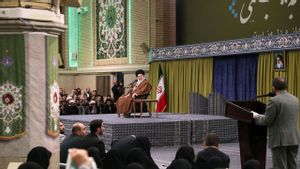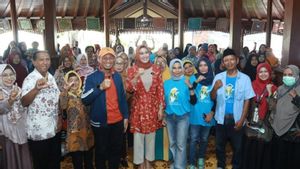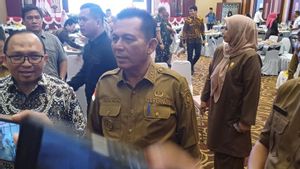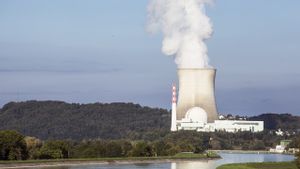PT PLN (Persero) established a memorandum of understanding (MoU) with Carbon Korea Co., Ltd. regarding the implementation of Carbon Capture, Utilization and Storage (CCUS) technology. This collaboration was carried out in order to accelerate the energy transition to achieve the net zero emissions target by 2060.
PLN President Director Darmawan Prasodjo said PLN fully supports the government's efforts to develop a sustainable and environmentally friendly energy sector. Including through the use of environmentally friendly technology such as CCUS to reduce carbon emissions from coal-fueled plants.
"This is a big concept that we show the world that currently PLN is leading efforts to fight climate change in Indonesia. We have shown the world that we have the will, we have removed 13 Giga Watt fossil energy from the Electricity Addition Business Plan (RUPTL), and today we will do a bigger cleaning," Darmawan said in a written statement, quoted on Saturday, September 9.
Darmawan said efforts to combat global climate change need collaboration as the key. Therefore, through this kind of collaboration, he is optimistic that the roadmap for energy transitions to fight climate change will be easier than running alone.
"So, I've heard a lot of reports about Korean carbon which is one of the best institutions, which involves technology for capture and storage of carbon. There are many patterns and many innovations, so I put a lot of hope in this kind of cooperation," he said.
The purpose of this CCUS implementation collaboration, said Darmawan, is to increase the sustainability of power generation and reduce carbon emissions. Decarbonization efforts using CCUS are considered strategic because the carbon captured can be converted into other products, such as methanol, format acid, to dimethyl ether.
Meanwhile, unconverted carbon dioxide (CO2) can be used to enhanched oil recovery (EOR) or enhanced gas recovery (EGS).
"Of course this cannot be separated from the government's big vision of making an energy transition," he said.
Darmawan said that currently PLN has a potential for 37.6 gigawatts (GW) of coal and gas plants that are ready to be installed with CCUS technology. With this technology, the carbon emissions produced from electricity production can be massively reduced.
In this MoU with Korean Carbon, Darmawan added, the two parties agreed to immediately conduct a joint study related to the development of sustainable energy, sharing knowledge, and capacity building of PLN employees. It was also explained that this joint study penetrated not only from a technical point of view, but also commercial CCUS.
In addition, PLN also continues to open the door of cooperation with various other parties regarding the implementation of CCUS. According to Darmawan, the amount of implementation costs is an obstacle to its implementation. For this reason, collaboration with various parties and incentives from the government is needed so that the application of CCUS technology is more affordable.
Meanwhile, Korean Advisor Carbon Won-Dong Cho expressed his appreciation for the intense energy transition efforts carried out by PLN. He said this MoU was a further step from the previous meeting.
"I have to say thank you to PLN under the leadership of Mr. Darmawan. This is the beginning we are trying, and this time we are here in Jakarta for commitment," he said.
Won-Dong Cho said that Korean carbon initially came to Indonesia to attend the ceremony of Indonesian President Joko Widodo (Jokowi). However, their commitment to accelerating the energy transition led them to be able to sign various understandings of cooperation with PLN in fighting global climate change.
"Our presence here is to realize our commitment," he concluded.
The English, Chinese, Japanese, Arabic, and French versions are automatically generated by the AI. So there may still be inaccuracies in translating, please always see Indonesian as our main language. (system supported by DigitalSiber.id)










